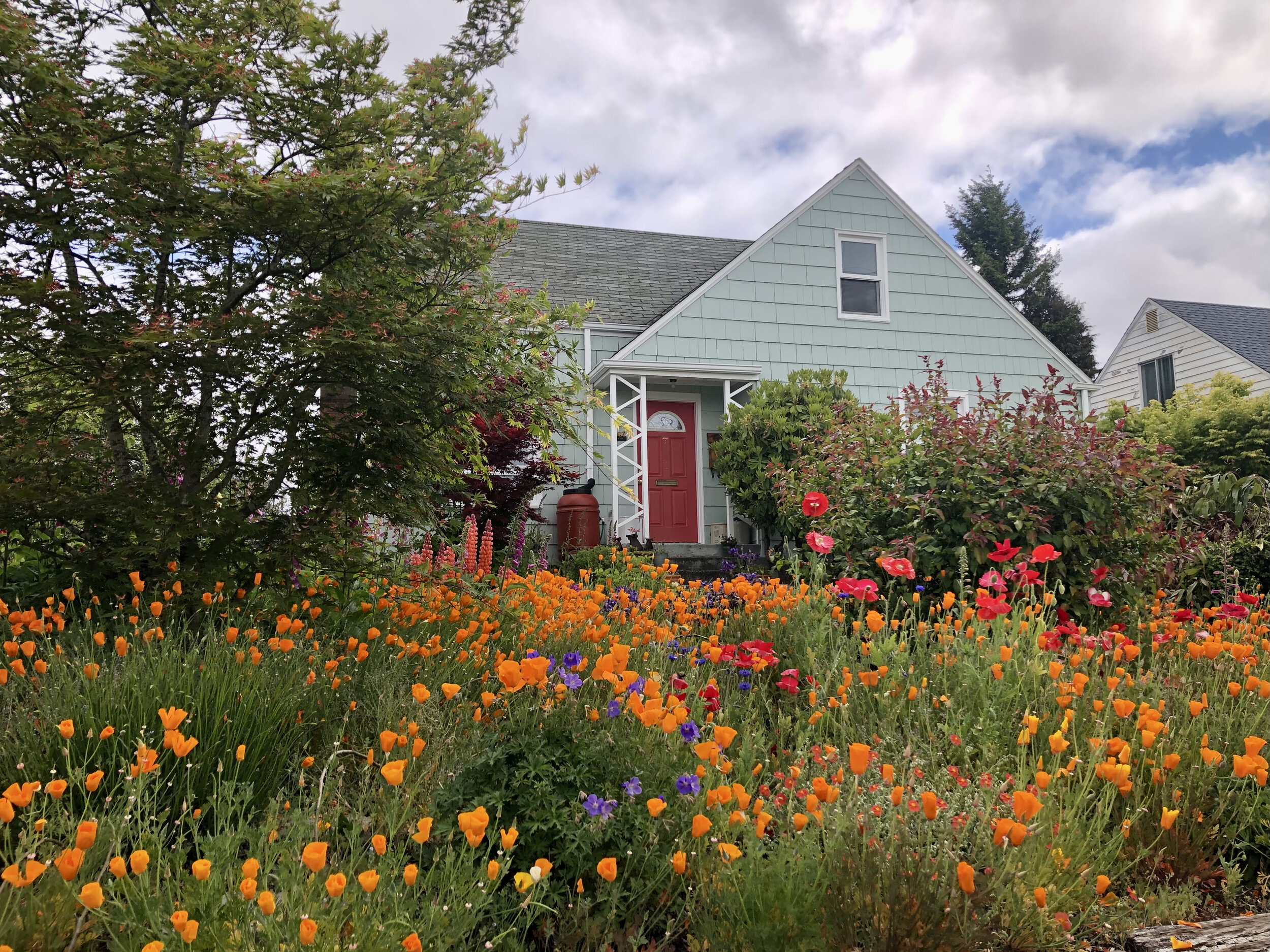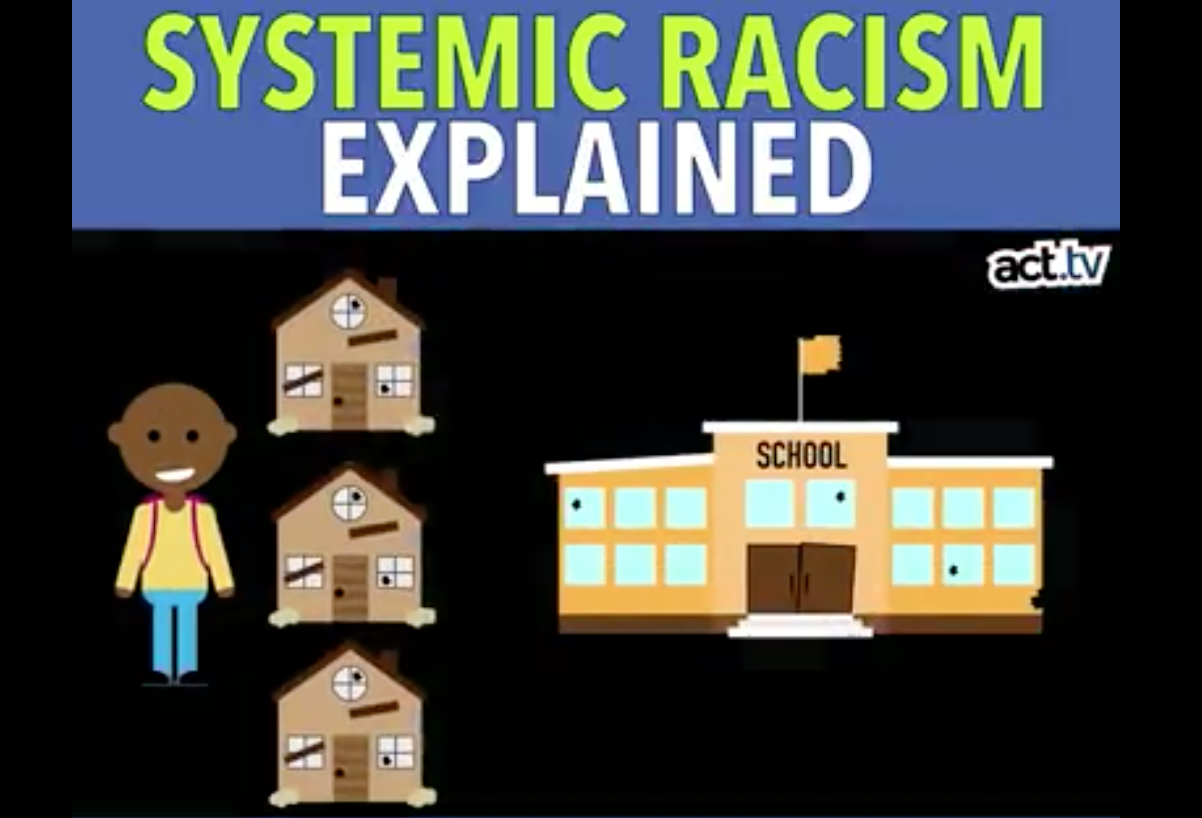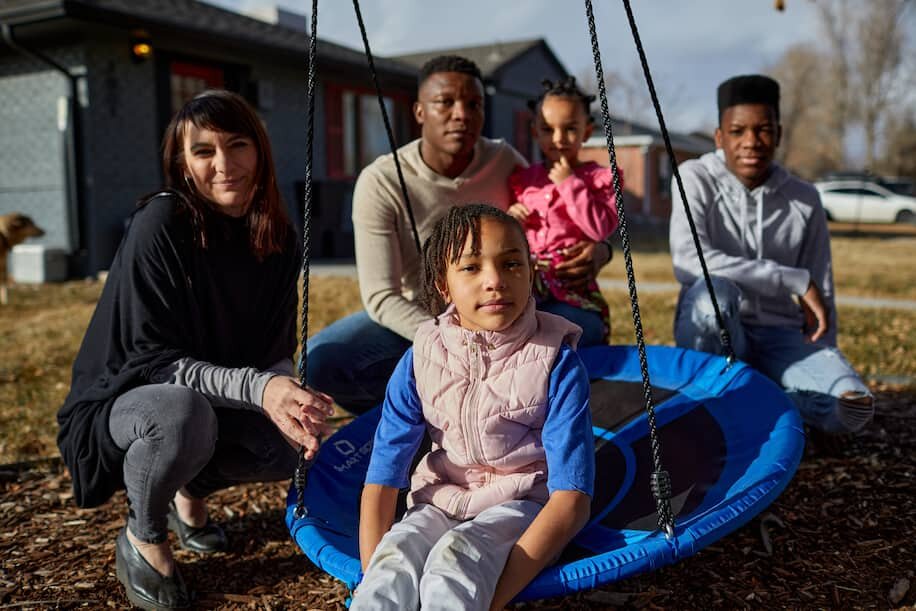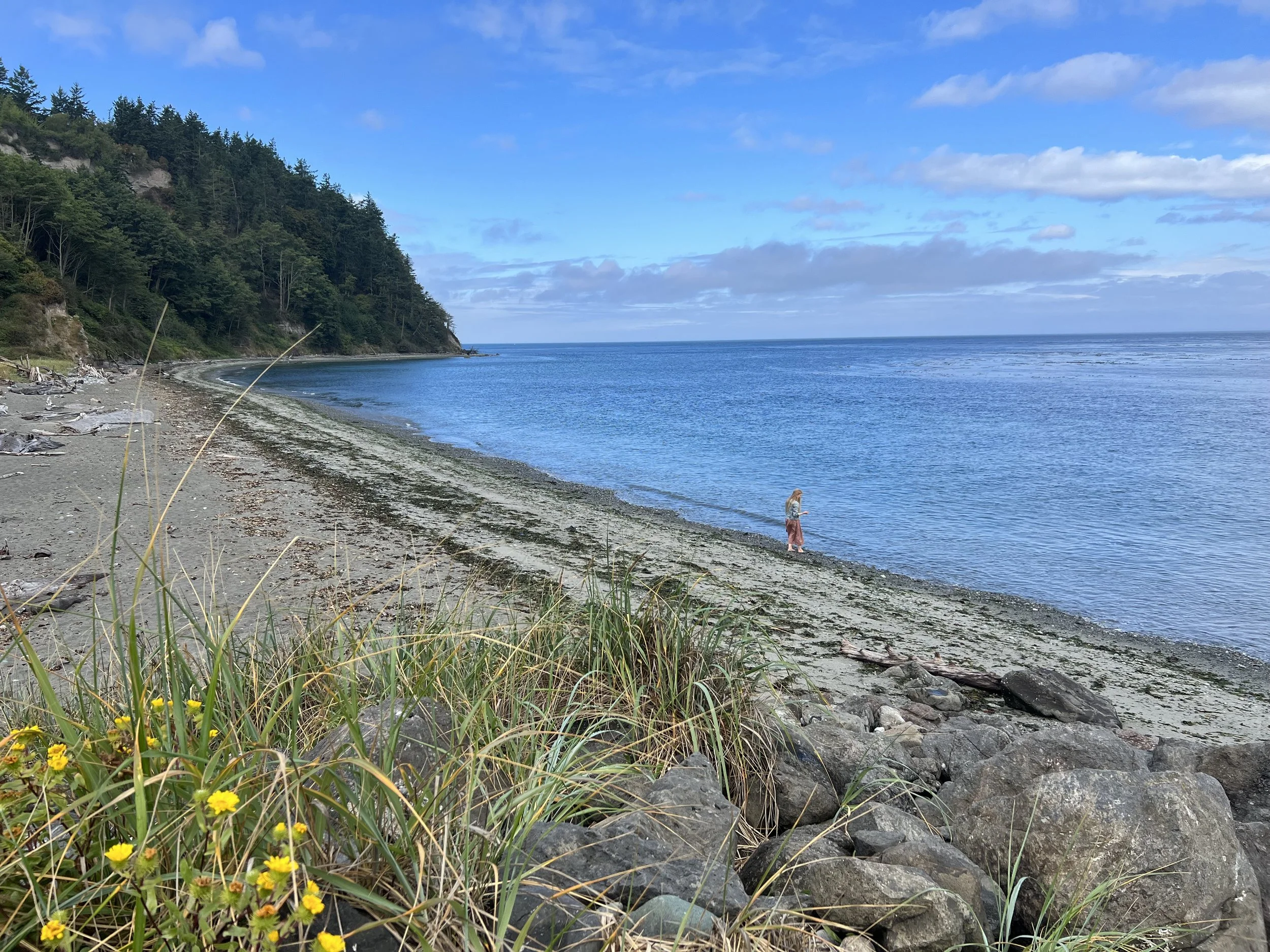Is there really a history of segregation here in the Pacific Northwest? Does racism still impact housing and wealth even though we have fair housing laws? Don’t we all have equal access now? Questions are a good place to start! Keep reading, watching, and listening to the resources shared below.
One year ago, in June 2020, we gathered some resources helpful to us as we sought to understand the history of housing, homeownership, segregation, and exclusion, and we shared those here on our site. Our goal last summer was to add to the short list we started and make it a living, growing resource for us, for other real estate professionals, and for any community member, or client to consider. Throughout the year we encountered and saved more articles, podcasts, and films, so you’ll find our original list integrated with more resources and reorganized into Watch, Read & Listen categories. (The United Way of Pierce County organized their 21-Day Equity Challenge this February into those categories and we don’t think they’ll mind us adopting it.) Our first section focuses on Tacoma, WA. If you’re not local, you’ll probably still learn from our city, but you’ll find broader articles, videos, and podcasts following the Tacoma section.
In this post:
Redlining, Equity Work & Affordable Housing in the City of Tacoma
Home in Tacoma Project: Affordable Housing Access Strategy
Systemic Racism in Housing in Tacoma, WA - Educational Resource List
Systemic Racism in Lending & Housing in the United States of America - Educational Resource List
Before exploring the past and present in Tacoma, here’s a little of our own story. We work in residential real estate in Tacoma and the surrounding areas, and this work, though satisfying on many levels, presents a constant moral quandary. That quandary is rooted in the knowledge that we benefit from a host of racist policies the outcomes of which haven’t yet been relegated to the past. The effects of exclusionary and predatory zoning, lending, and real estate practices of past decades persist into the present. We see this in the growing gap in wealth, in the declining percentage of Black homeownership in America, in the continued disparities in school funding (inequitable funding for public education determined by property taxes would be another article entirely). And one thing we’ve come to know as homeowners and people working in this field is that a home is often the most valuable asset people can claim, an asset that provides stability, that can be borrowed against to fund an education or start a business, an asset that can be passed down through generations.
The house in the images above is our home in Tacoma, built in 1946. It’s a home we bought together at the age of 25 with the help of President Barack Obama’s first-time homebuyer program. That’s years before we worked in real estate. Michael served in a restaurant and I was a part-time office administrator. (It continues to strike me that we—two young white people—benefited from a program under the first Black president when so many federal policies have excluded BIPOC communities from access to loans and homeownership decade after decade.) We’ve been reevaluating the sweet story about our neighborhood. The story about these solid, modest, post-war homes that welcomed veterans and their families to settle down and settle in. Who wasn’t welcomed? Who was excluded from qualifying for the loan? Beyond being unwelcome, who was explicitly refused access? That’s what I’m thinking about as I sit in my quiet house with its big back yard in a part of town that, though relatively modest, is actually becoming less and less affordable to first-time homebuyers, and—like the rest of the city—is still fraught with a history of racist exclusion.
Our goal in reading, watching, listening, and sharing educational resources isn’t just to learn and move on unchanged. The goal is for this learning to be a foundation that guides our actions at work, informs how we vote for policies, impacts how we advocate in our community, and how and where we use our money.
Let’s take a look at what Tacoma is working toward and how you can be part of it.
Redlining, Equity Work & Affordable Housing in the City of Tacoma
In 2014 the City of Tacoma established the Office of Equity and Human Rights (OEHR). Visit the OEHR to learn more about what the City of Tacoma is working on now regarding “equity, opportunity, partnerships, and accountability.” You’ll find demographic information, and you’ll see who is represented and who is underrepresented within our city’s workforce. The city also shares a redlined map of Tacoma from 1937, as well as an example of a racially exclusive neighborhood covenant in 1944 that stated:
“No part or parcel of land or improvement thereon shall be rented o re)eased to or used or occupied, in whole or in part, by any person of African or Asiatic descent, nor by any person not of the white or Caucasian race, other than domestic servants domiciled with an owner or tenant and living in their home.”
We’re encouraged that our city is moving to work on equity and representation, but we understand as citizens we can’t just expect it to happen without us. Participation is part of advocacy. As the City of Tacoma site states, “The Office of Equity and Human Rights is committed to uncovering barriers that prevent people from achieving their full potential and creating better outcomes for all.” On that note, there’s a project in progress in Tacoma right now that gives us all an opportunity to consider housing, accessibility, affordability, and the future. Take a look.
Image from the Home in Tacoma Project
Home in Tacoma Project: Affordable Housing Access Strategy
If you’re not familiar with this project yet, let’s start with what the project proposes to achieve. The project offers three stated goals:
Increase housing supply
Increase housing affordability
Increasing housing choice
From the Home in Tacoma Project page - Home In Tacoma Project Proposed Actions:
Allow more housing types throughout Tacoma's neighborhoods, such as duplexes, triplexes, cottage housing, and in some cases fourplexes and small multifamily housing
Allow mid-scale multifamily housing in areas close to shopping and transit
Update design standards so new housing complements the neighborhood
Strengthen policies and programs to make housing more affordable
Strengthen anti-racism and anti-displacement policies and programs
The Planning Commission encouraged residents of Tacoma to complete a survey to educate the city leadership about what community members would like to see regarding zoning and types of housing. This project exists in part because housing costs are rising more quickly than incomes and a high percentage of Tacoma households struggle financially.
Where is the project now?
An Update from the City of Tacoma:
"On May 19, 2021 the Planning Commission finalized their Home In Tacoma Project recommendations, as directed by the City Council. The recommendations would change Tacoma housing growth strategy to support more housing supply, choice and affordability. If this housing growth vision is adopted by the City Council, the City would begin a community dialogue on how to implement the vision through zoning, standards and other actions."
Notice the text above say if the vision for housing growth is accepted by the City Council, then a dialogue begins, a dialogue with the community. That's us! That's you! We think it's going to be very important to evaluate our values and notice our own reactions and concerns when recommendations might include changes to zoning in our own neighborhoods. We hope you'll continue to keep an eye on the project, and that you might even draw connecting lines between housing affordability, zoning, equity, and segregation (yes, right here in the PNW).
Stay up to date on the Home in Tacoma Project here at cityoftacoma.org. And visit the Home in Tacoma interactive website for graphs, maps, housing examples, and for a brief history of redlining in Tacoma. If this just isn’t hitting home for you, or it doesn’t seem necessary or right that anything other than personal choice and the free market should come into play as we look at housing in this day and age, take some time with the material shared below. It might open a window to a different view.
Systemic Racism in Housing in Tacoma, WA - Educational Resources
Watch:
Redlining: Tacoma’s Internal Divisions
9 minutes
from Tacoma Public Library
“The two small red areas on the map, D3 and D4, were justified a lower rating only because, according to the notes that accompany the map, quote “there are several Negro families, three known, who own property and live in this area. This constitutes a sufficient hazard to justify a 4th grade rating.””
How a government program blocked people from buying homes
4.5 minutes
Tacoma News Tribune, by David Montesino
Read:
How racism kept black Tacomans from buying houses for decades
Tacoma News Tribune Article, by Kate Martin,
Published in August 2018, the article includes the short video by David Montesino (link provided above) that’s worth watching before or after you read.
“On maps that lenders and real estate agents used, some neighborhoods were “redlined” — literally marked in red — to designate them as the city’s least safe housing investments. Neighborhoods with apartment buildings, widely varying construction styles or a general run-down appearance were seen as poor returns.
But in the eyes of many of the country’s bankers, nothing downgraded an otherwise acceptable neighborhood like the presence of black families, records from the time show over and over again.”
Systemic Racism in Lending & Housing in the United States of America - Educational Resources
Of course, this is not just a Tacoma problem. Redlining, and federally supported racial exclusion is a nationwide problem with nationwide consequences. Following, you’ll see some books, articles, podcasts, and films that may help with understanding how we got where we are, and can inform how we might change.
Watch:
Segregated by Design, by Mark Lopez & Richard Rothstein
18 minutes
This short film is made in collaboration with Richard Rothstein, author of Color of Law, the book we recommend in the Read section below. Whether or not you plan to read the book, watch this film!
“This is the major challenge at hand: to educate fellow citizens of the unconstitutional inequality that we’ve woven and, on behalf of our government, accept responsibility to fix it.”
Image from Segregated by Design
Systemic Racism Explained, from act.tv
5 minutes
“Kevin and Jamal live only a few streets away from each other. So how come they’re growing up in such different worlds?”
Image from NPR.org
Race & Redlining: Housing Segregation in Everything, from NPR’s Code Switch with Gene Demby
6 minutes
This video is a partner to the 35 minute Code Switch podcast episode listed in the Listen section below. We learn in different ways, so it’s important to present information in as many ways as possible here. And for many of us, repetition is important. So, even if you listen to the podcast episode, find a few minutes of time and give this short film a watch.
Read:
Image from Axios
Article: Hard Truths Deep Dive: Race and Housing In America, from Axios
We came to this article from Axios from a Habitat for Humanity newsletter. If you want to stay connected to ways to advocate for housing in your area, we recommend subscribing to your local Habitat chapter’s newsletter.
Book: The Color of Law: A Forgotten History of How Our Government Segregated America, by Richard Rothstein
Skip Amazon and order from a local bookstore like King’s, or from an independent, black-owned book store on this list at the Literary Hub
Or order it from Elizabeth’s Bookshop & Writing Centre, founded by Rachel Cargle, where a portion of all sales goes to The Loveland Foundation “making mental healthcare accessible for Black women and girls.”
“We like to think of American history as a continuous march of progress toward greater freedom, greater equality, and greater justice. But sometimes we move backward, dramatically so. Residential integration declined steadily from 1880 to the mid-twentieth century, and it has mostly stalled since then.”
Image from Windermere Abode
Blog Post: It’s Time We Pull Back the Racist Curtain in Real Estate: 3 Actionable Steps We Can Take, by Dave Jones
We’re glad to belong to Windermere Abode, one of very few brokerages with Black ownership, and a place where conversations about values, ethics, racism, access, and community aren’t just for special holidays, or specific trainings, but are part of everyday life and culture within the office. Co-owner Dave Jones authored this article to enlighten and challenge our real estate community.
“White realtors, step up, own the history and begin taking steps to correct it. I hear people saying they don’t want to ‘politicize’ business. My opinion is if there are government policies oppressing black people, then this is a political matter in the sense that we need to reverse oppressive policy. This is what it may take for a majority in real estate; a deep dive into your value system as you know it. I hope the majority feel that inequality and oppression is not a practice we want to continue to uphold and maintain.”
Article: The Case for Reparations, by Ta-Nehisi Coates in The Atlantic
Image from The Atlantic, Carlos Javier Ortiz
“They were no longer fleeing in hopes of a better deal elsewhere. They were charging society with a crime against their community. They wanted the crime publicly ruled as such. They wanted the crime’s executors declared to be offensive to society. And they wanted restitution for the great injury brought upon them by said offenders. ”
“The American real-estate industry believed segregation to be a moral principle. As late as 1950, the National Association of Real Estate Boards’ code of ethics warned that “a Realtor should never be instrumental in introducing into a neighborhood … any race or nationality, or any individuals whose presence will clearly be detrimental to property values.” A 1943 brochure specified that such potential undesirables might include madams, bootleggers, gangsters—and “a colored man of means who was giving his children a college education and thought they were entitled to live among whites.”
The federal government concurred.”
Article: For Black Homeowners, a common conundrum with appraisals, by Troy McMullen - The Washington Post
“Financial educator and author Tiffany Aliche says devaluing the properties of Black homeowners also presents obstacles toward building equity, which works to perpetuate income inequality. That’s especially true in predominantly Black neighborhoods where the legacy of redlining can still be found, she says.”
Image from The Washington Post
Statement on the Historic Hearing on H.R. 40 - a Bill to Establish a Commission to Study and Develop Reparation Proposals for African Americans, by Representative Sheila Jackson Lee
If you read Ta-Nehisi Coates’ article above, you’re going to come across H.R. 40 frequently. What is H.R. 40?
“This bill establishes the Commission to Study and Develop Reparation Proposals for African-Americans. The commission shall examine slavery and discrimination in the colonies and the United States from 1619 to the present and recommend appropriate remedies. Among other requirements, the commission shall identify (1) the role of federal and state governments in supporting the institution of slavery, (2) forms of discrimination in the public and private sectors against freed slaves and their descendants, and (3) lingering negative effects of slavery on living African-Americans and society.” - from Congress.gov
Originally sponsored by former Congressman John Conyers, now Congresswoman Sheila Jackson Lee of Texas has taken up the cause and made the press statement linked above on Juneteenth - June 19, 2019. She introduced H.R. 40 once again this January 2021.
“This historic discrimination continues: African-Americans continue to suffer debilitating economic, educational, and health hardships…A closer look at the statistics reveals the stark disparity in these areas. Black household wealth is less than one fifth of the national average. The median black household had a net worth of just $17,600 in 2016. Yet in that same year, the median white house hold held $171,000 in wealth while the national household median was $97,300. The black unemployment rate is 6.6%, more than double the national unemployment rate. Approximately 31% of black children live in poverty, compared to 11% of white children. The national average is 18%, which suggests that the percentage of black children living in poverty is more than 150% of the national average.”
Article: “Vestiges of segregation”: US homeowners fight deeds that exclude buyers based on race, by Carey L. Byron - Sight Magazine
It’s really good to see NAREB (National Association of Real Estate Brokers) publishing articles like this to their site. You’ll see Richard Rothstein (author of Color of Law) pop-up again here to weigh-in on removing restrictive covenants, “I am in favour of such a movement if it is conducted by groups that are going to take concrete steps to actually desegregate the neighborhoods from which these deeds excluded African Americans…I am not in favour of movements to erase evidence of segregation from view, without any corresponding effort to undo its consequences, so that future generations will not have to be reminded of unpleasant realities.” An important distinction to consider!
“Restrictive covenants and other restrictions “in large part” resulted in today’s lower levels of Black homeownership, said the National Association of Realtors, citing 2017 government data on white homeownership of nearly 73 per cent versus just 42 per cent among Black people.”
Blog Post: Striking Restrictive Racial Language from Your Title, by Sandy Dodge - Windermere Real Estate
“...the language of restrictive racial covenants is still written in the chain of title for many homeowners nationwide.”
This short post provides a very brief timeline of supreme court rulings related to restrictive racial covenants, and also offers resources for assisting homeowners in removing racially restrictive language from their title. If you’re in the Tacoma area and have interest in checking into this, get in touch with us at Windermere Abode and our office will be pleased to assist you.
Article: How Real Estate Professionals Can Combat Racism, by Carrie B. Reyes - firsttuesday Journal
“The takeaway here is that numerous laws exist to prevent discrimination. But the prohibition alone isn’t enough to ensure equal access to housing for all. Acts of implicit discrimination are especially prone to occur, as they can happen without the perpetrator even realizing they are being discriminatory. But this type of discrimination is just as harmful and sometimes more harmful, since it is so prevalent.”
Image from firsttuesday
Listen:
Podcast Episode: Location! Location! Location! from NPR’s Code Switch
Location! Location! Location! - 35 minutes (full transcript available alongside the audio story)
“When you’re scrolling through your news feed, pick a national news story that has ostensibly nothing to do with race or residential segregation, right? Then think about the ways that housing is actually shaping that story, the way place is used as a shorthand for politics or class, who the voices in that story are and what those voices sound like.”
Image from NPR.org
Image from Stuff You Missed in History Class
2 Part Podcast: A Brief History of Redlining, from Stuff You Missed in History Class, by Holly Frey & Tracy Wilson
A Brief History of Redlining, Part 1 - 31 minutes
A Brief History of Redlining, Part 2 - 32 minutes
“For roughly a century after the abolition of slavery, neighborhood segregation was legally enforced. Regardless of whether people wanted to live near other people who were similar to them, the law made it next to impossible to live anywhere else. ”
The resources above are just a place to start. Once you start reading and listening, once you start looking and talking and wondering, you’ll be lead to more stories, more history, more opportunities to know and do and change and work. We hope you found something of value, whether it was a 6 minute video break, a 30 minute podcast to accompany your after-dinner dishwashing, or a deep dive into some of the articles. Thank you for being here.
If you’re eager to keep reading, listening, and watching, consider visiting the Windermere Diversity Equity & Inclusion page where you’ll find their list of informative resources.




























